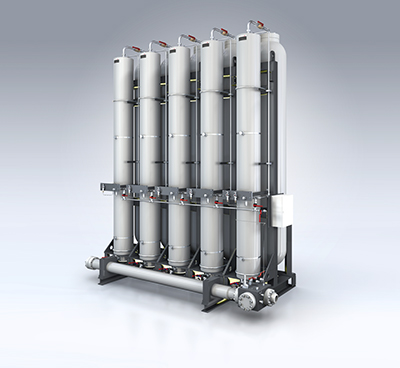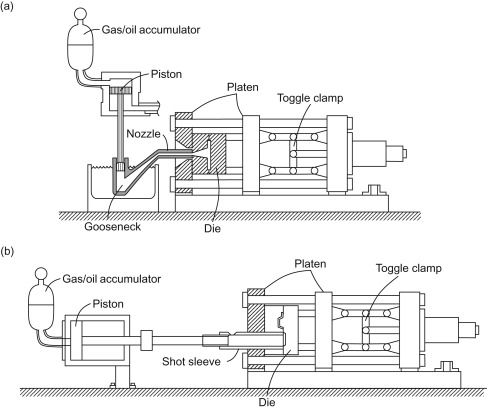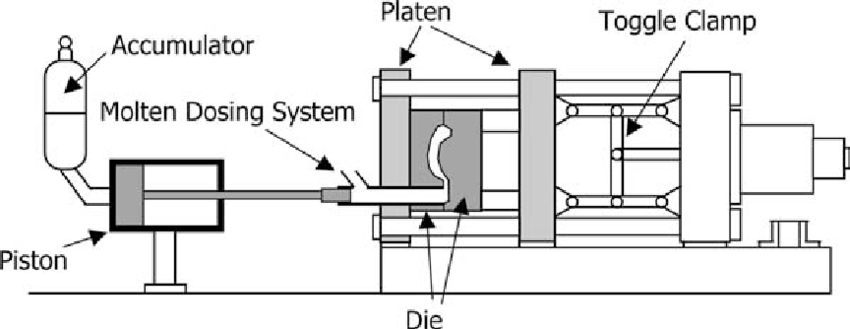The function of accumulator is to support the high-pressure, fast and precise metal fusion injection process through energy storage and release mechanisms.
In die casting, where molten metal must fill intricate molds within milliseconds, the accumulator serves as the hydraulic system’s powerhouse.
Enabling the extreme speeds and pressures essential for defect-free production.
Acting as an energy reservoir, it transforms limited pump capacity into explosive force on demand.

The core function and working principle of the accumulator
- Energy storage and rapid release
- Pressurizing effect
- Stabilize system pressure
Energy storage and rapid release
Accumulators store hydraulic energy by compressing gas, usually nitrogen.
When the system pressure is high, the hydraulic oil enters the accumulator compressed gas.
When the system needs instantaneous large flow.
The accumulator quickly releases the stored hydraulic oil to meet the high-speed action requirements of the injection mechanism.
This mechanism is based on Boyle’s law the volume of a gas is inversely proportional to the pressure.
For example, the pressure can be doubled when the volume of a gas is compressed to half.
Pressurizing effect
In the pressurization stage of die casting, the accumulator provides additional pressure through independent circuits.
For example, when a booster accumulator is activated after injection is complete.
Its stored high-pressure oil pushes the booster piston to further compact the molten metal.
Reducing porosity inside the casting and increasing density.
In the dual-circuit design, the booster accumulator is separated from the injection accumulator.
To ensure the independence and controllability of the booster pressure.

Stabilize system pressure
The accumulator maintains the pressure stability of the hydraulic system by supplementing leaks and buffering pressure fluctuations.
For example, in the slow injection phase, the accumulator balances the intermittent oil supply to the pump and avoids sudden pressure drops that can lead to unstable injection velocities.
The national standard stipulates that the pressure drop of the accumulator shall not exceed 10% of the working pressure for each injection.
The installation position of accumulators in the die-casting machine
The specific installation position of the accumulator in a cold chamber die-casting machine is usually at the connection between the injection system and the clamping system, or on the outlet pipe of the hydraulic main station.
The installation position of the accumulator should ensure that it can respond quickly to the pressure requirements of the injection system.
Thereby reducing pressure fluctuations in the hydraulic system and improving injection accuracy and efficiency.
Technical Execution: How Accumulator Works

Key Specifications
Type: Bladder (90% usage) vs. Piston (high-pressure).
Pre-charge Pressure: 85% of minimum system pressure (e.g., 170 bar for 200-bar system).
Response Time: <15 ms from signal to full flow.
The influence of accumulators on injection systems
- Improve response speed
- Reduce pressure fluctuations
- Optimizing system efficiency
- Adaptation to different working conditions
Improve response speed
Accumulators can provide a large flow of hydraulic oil in a short time, thereby reducing the response time of the injection system.
When the injection system needs to be rapidly pressurized, the accumulator can quickly release the stored energy.
Enabling the hydraulic system to reach the required pressure more quickly and thereby enhancing the overall response speed.

Reduce pressure fluctuations
Due to the presence of accumulators, the hydraulic system can regulate pressure more smoothly during operation, reducing response delays caused by pressure fluctuations.
This helps to enhance the stability and consistency of the injection system, especially in die-casting processes with high precision requirements.
Optimizing system efficiency
Accumulators can reduce the frequent start and stop of hydraulic pumps by storing and releasing hydraulic energy.
Thereby lowering energy consumption and enhancing the overall efficiency of the system.
This optimization not only extends the service life of the equipment but also indirectly enhances the response efficiency of the injection system.
Adaptation to different working conditions
In cold chamber die casting machines, the pressure requirements under different working conditions may vary.
The accumulator can flexibly adjust the speed and amount of energy release according to actual needs.
Thereby better adapting to the injection requirements under different working conditions and ensuring that the system is always in the best working condition.



